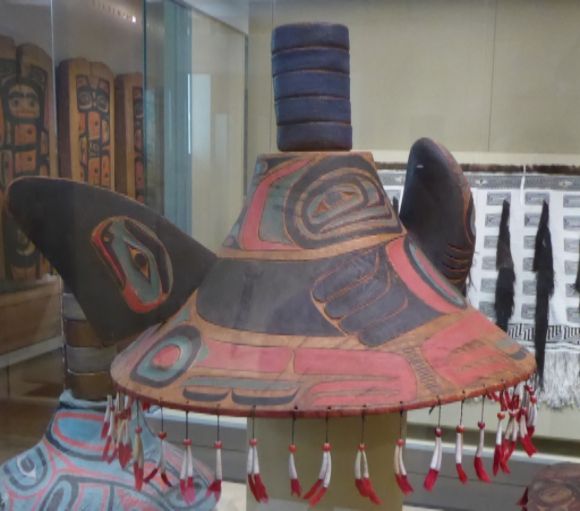The Northwest Coast culture area stretches along the Pacific coast between the Cascade Mountains and the ocean. It extends north of California to Alaska. This is an area which is the home to many Indian nations who traditionally based their economy on the use of sea coast and river ecological resources. The Northwest Coast culture area stretches from the Tlingit homelands in Alaska to the Tolowa homelands in northern California.
In his book Northwest Coast Indian Painting: House Fronts and Interior Screens, Edward Malin writes:
“This narrow littoral was a region of immense physical complexity, an oceanic environment clothed in limitless forest covering the rugged and precipitous mountain ranges.”
Edward Malin also describes it this way:
“The region is an immense symphony of churning ocean, occasionally becalmed, but never tranquil, seemingly countless inlets and impregnable fjords, and mountain chains, one following another mantled in a dense forest of red cedar, spruce, and hemlock.”
While the stereotype of the American Indian envisions warriors and chiefs wearing a feathered headdress, this was not the case among the peoples of the Northwest coast. With regard to Northwest Coast headgear, Josephine Paterek, in her book Encyclopedia of American Indian Costume, reports:
“The famous basketry hats of the Northwest Coast were twined of spruce or cedar root or shredded cedar bark; they were of various shapes—some with wide brims to shed rain, some with knobs on top to denote the status of chief, some dome-shaped, and, in the far south, women’s hats were in the truncated cone shape of the Plateau or the small rounded form of northern California.”
Josephine Paterek also writes:
“Some clan hats in the north were carved of wood in the shape of a crest animal; these, like the frontal headdresses, were especially for ceremonial occasions.”
Shown below are some of the Northwest Coast hats on display in the Portland Art Museum.

 Shown above is a Tlingit shark hat from the late nineteenth century. It is made from red cedar, paint, spruce root, glass beads, dentalium shells, cloth, and sinew.
Shown above is a Tlingit shark hat from the late nineteenth century. It is made from red cedar, paint, spruce root, glass beads, dentalium shells, cloth, and sinew.
 Shown above is a nineteenth century Tlingit hat brim made from wood, paint, cloth, and leather.
Shown above is a nineteenth century Tlingit hat brim made from wood, paint, cloth, and leather.

 Shown above is a Tlingit or Haida raven hat made about 1900.
Shown above is a Tlingit or Haida raven hat made about 1900.

 Shown above is a Tlingit sea lion hat made by William Kaska about 1930 using wood, paint, glass beads, and yarn.
Shown above is a Tlingit sea lion hat made by William Kaska about 1930 using wood, paint, glass beads, and yarn.

 Shown above is a nineteenth Tlingit killer whale hat made from spruce root, copper, and paint.
Shown above is a nineteenth Tlingit killer whale hat made from spruce root, copper, and paint.
 Shown above is a Tlingit frog headdress made about 1880.
Shown above is a Tlingit frog headdress made about 1880.


